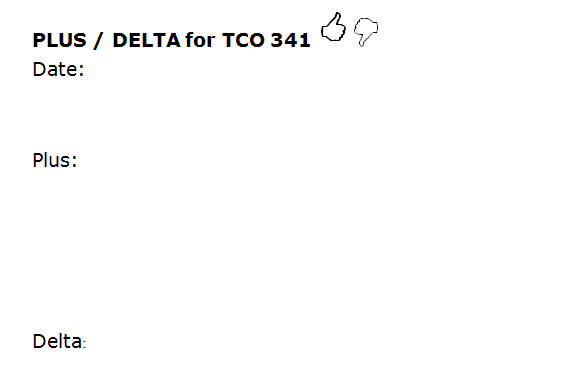We are all so busy. We race from task to task. We attempt to multi-task; dividing and depleting our energies. How many times do we arrive in class breathless with hardly a moment to think about what we have planned for the day? I harbor no illusions that a blog entry is going to change our lives, but I would like to use this one to reiterate the need to make time for reflection, for contemplation about what we do, and how and why we do it. The value of doing so is laid out clearly in a new book, A Teacher’s Reflection Book: Exercises, Stories, Invitations by Jean Koh Peters and Mark Weisberg.
Read more ›CURRENT ARTICLE • November 04
OTHER RECENT ARTICLES
How much time do you spend each semester creating, updating or maintaining your course syllabi?
Read More ›Professors teach in a vacuum; we enter the classroom, deliver our lessons, and leave, and rarely get any feedback on the quality of our instruction before the end of the semester when formal faculty evaluations are completed by students. Other than grades on tests and other assessments, we really don’t know for sure if students are learning what we are teaching, and we often don’t have a good handle on whether our instruction is working.
Read More ›For many college instructors, getting students to read their textbooks is a continuous struggle. Not only are students unmotivated to read, but even when students do read they often lack the necessary skills to fully comprehend the material. As a result, instructors may subtly or unwittingly communicate that reading the textbook is not necessary in order to pass a course. This communication can take the form of providing students with elaborate study guides or notes that summarize the reading or include all the answers to upcoming tests or quizzes.
Read More ›As an instructor of Cisco Networking Academy training for 12 years, I’ve tried many types of teaching strategies. The students in this area of the CIS Department bring various technical and soft skills to the classroom, from less-than-fundamental to exceptional. In relation to these skills, The National Business Education Association (Glenn, 2011) reported that workforce requirements suggest that educational institutions should do more to help their students develop the “four Cs”: critical thinking, creativity, communication, and collaboration.
Read More ›The number of technologies available to both higher education institutions and individual instructors seems to grow each day. With tools that promise to increase engagement, communication, interaction, efficiencies, and learning, it’s easy to get overwhelmed. It’s also easy to make bad choices — choices that could result in wasted money, time, or learning opportunities, all the while causing undue frustration for students and faculty alike.
Read More ›I must confess I still enjoy catalog shopping. I know how that dates me but at the end of the day, the last thing I want to curl up in bed with is my laptop. I particularly enjoy catalogs that include recipes. The King Arthur Flour catalog and Penzeys Spices are favorites. The fall 2011 Penzeys’ catalog pays special tribute to teachers because, company founder and owner Bill Penzey says, teachers aren’t feeling a lot of respect these days and they are being inappropriately blamed for our economic woes when, in fact, they do more to build the economy than anyone else. “Teachers are strong people, but their jobs are hard and have a way of using up that strength,” he writes.
Read More ›Teach Like It’s 1990: Online Teaching Fundamentals Are Always in Style
The list of technological add-ons to enhance our teaching efforts seems to be endless and growing. Yet as these add-ons continue to grow in use, a problem has also begun to surface: the online instructor who relies on these “cool” apps and software so heavily that he or she begins to neglect the basics of teaching.
Read More ›The November issue of The Teaching Professor newsletter contains highlights from a speech given by Diane L. Pike at the 2010 Midwest Sociological Society meeting and subsequently published in the reference below. It’s a great speech that identifies three dead ideas in teaching and the tyranny that results from holding those beliefs.
Read More ›In a major move to increase access and collaboration in higher education, last week Pearson launched a free learning management system (LMS) delivered from the Cloud. Dubbed OpenClass it offers institutions and instructors the ability to engage and interact with their students using the collaborative technologies that students are embracing.
Read More ›





